Basilica of Our Lady of Lanka or Tewatta Church is a Roman Catholic basilica in Tewatte, Ragama, Sri Lanka. It comes under the purview of the Roman Catholic Archdiocese of Colombo and is a site of pilgrimage for Sri Lankan Catholics. This sacred church is home to the venerated statue of Our Lady of Lanka. Today, Tewatta Church stands as the only Basilica in Sri Lanka, where the highest number of devotees throng to celebrate the Feasts of Our Lady each year. To the Catholic community in Sri Lanka, Tewatte palliya is one of their most venerated shrines.
Tewatta Basilica Ragama is a fulfilment of a vow, erected in honour of the Virgin Mary, Our Lady of Sri Lanka, expressing the gratitude of Sri Lanka for Her intervention at the hour of need and protecting Sri Lankan soil from the perils of World War II. The then Archbishop, Rev. Jean Marie Masson, beseeched Mother Mary to intercede on behalf of Sri Lanka and protect the country. And in the event our country is saved from the effects of the war, the Basilica will be built in Her honour. But thanks to Our Lady, Her intercession saved our land.
The burden of fulfilling that vow fell on the shoulders of the late His Eminence Thomas Cardinal Cooray, and he fulfilled the vow during his tenure. Today we have a beautiful basilica that identifies the dedication of the Sri Lankan Church as a whole. Around the church is a large garden where rows of Na trees offer shade, enriching the serenity of the Church. The Basilica of Our Lady of Lanka continues to unite all Catholics in prayer and devotion. It remains the iconic landmark of Ragama and continues to remain a desired religious site for faithful pilgrims.
Basilica of Our Lady of Lanka, Tewatta, Ragama Contact number: 0112 958 211
Related Post: Holy Cross National Shrine, Marawila, Sri Lanka
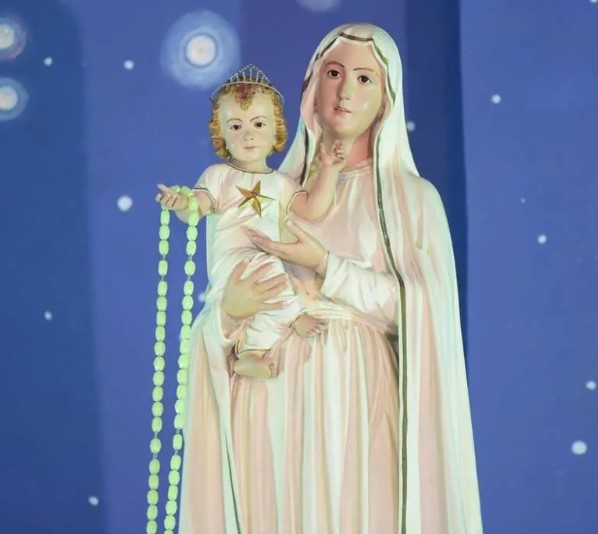
History of Tewatta Church (Basilica of Our Lady of Lanka)
Our Lady of Lanka began its life In 1911, a small chapel dedicated to Our Lady of Lourdes (Mary Immaculate), France, was built in Thewatta by Rev. Fr. Kieger. This was the humble beginning of the Tewatte Church. And then, in 1917, a small grotto dedicated to Our Lady of Lourdes was added by Rev. Fr. Collorec with the help of the people from the Ragama parish. The growing popularity of the chapel led to the chapel being expanded into a church in the 1930s. However, Tewatta Church’s true rise to fame occurred due to the former Archbishop of Colombo, Jean-Marie Masson, during the outbreak of the Second World War.
World War II began on September 1, 1939, with the German invasion of Poland. On December 7, 1941, the Japanese military launched a surprise air attack on the United States Naval Base at Pearl Harbor, Hawaii. After the Japanese bombing of Pearl Harbor, the United States declared war on Japan. After the breakout of World War II, there was an imminent threat of an aerial assault by the Japanese military forces on Sri Lanka, and most Ceylonese were engulfed in fear. If any of the major powers at the time decided to use Ceylon, they would definitely gain a huge advantage and may even be able to win the war.
On May 26, 1940, Archbishop Jean Marie Masson kneeled at the Grotto at the Our Lady of Lourdes chapel in Thewatte and prayed earnestly to our lady. He made a vow to Our Blessed Mother Mary to intercede on behalf of Sri Lanka and protect the country from World War II. He prayed to God and vowed that if Ceylon got protected from major conflict, he would build a votive basilica under the title Our Lady of Lanka and entrust the safety of Sri Lanka to her maternal care. This chapel, grotto, and well with healing waters continue to exist today, just opposite the Basilica of Our Lady of Lanka, Tewatta.
On Easter Sunday, April 5, 1942, a Japanese force led by Commander Mitsuo Fuchida of Pearl Harbour fame attacked strategic targets in Colombo, including Colombo harbour, sinking several ships and causing widespread panic among the population. On Wednesday, April 8, 1942, the Japanese fleet, as expected, attacked Trincomalee as well. Archbishop Masson’s wish came true, and the country itself remained virtually unscathed by the war as the Japanese gave up their plans to invade Sri Lanka. After the atomic bombs were dropped on Hiroshima and Nagasaki, Japan surrendered on September 2, 1945, and the Second World War came to an end.
In 1946, Archbishop Masson obtained approval from Pope Pius XII for the construction of the Basilica in honour of Our Lady of Lanka. Unfortunately, Archbishop Masson passed away on July 28, 1947. The mantle of fulfilling this vow and building the votive shrine fell on the shoulders of his successor, the first Ceylonese Archbishop, His Eminence Thomas Cardinal Cooray, OMI. He took over the responsibility of fulfilling the vow of his predecessor and began to envisage this daunting project with much faith.
Earlier, the church owned a small piece of land on which the old chapel stood. Rev. Fr. Claude Lawrence had prayed that they would find some land next door, and shortly the estate named Orange Hill was up for sale, and the church purchased the land. The construction work on the basilica began soon afterwards. Plans and designs were needed, and a prudent Jesuit monk named Fr. Heras designed the Tewatta Basilica with some elements of Indian architecture.
Within these massive Church premises, one can also find a small granite chapel and a grotto. It is believed by many that the grotto is similar to the one found at the world famous pilgrimage site at Lourdes. It is recorded that the statue of Our Lady of Lanka was sculpted by a famous sculptor named Thedim of Fatima and brought to the Basilica of Our Lady of Lanka in December 1952. Cardinal Cooray had asked that three Na flowers be induced in the pedestal of the statue, enhancing the Sri Lankan expression.
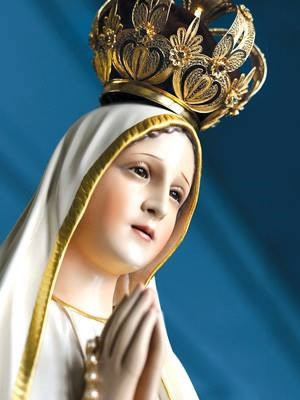
Sculptor José Thedim
The world-famous International Pilgrim Virgin Statue (IPVS) of Fatima was sculpted in 1947 by world famous sculptor José Thedim. José Ferreira Thedim (1892–1971) is the Portuguese sculptor who created a statue beloved by millions. The image reflects the precise instructions of Sister Lucia. On May 13, 1917, the Blessed Virgin Mary first appeared to three shepherd children, Lúcia dos Santos, Francisco Marto, and Jacinta Marto, at the Cova da Iria outside the village of Aljustrel, near Fatima, Portugal, when they had a vision of a woman surrounded by light who identified herself as the Lady of the Rosary.
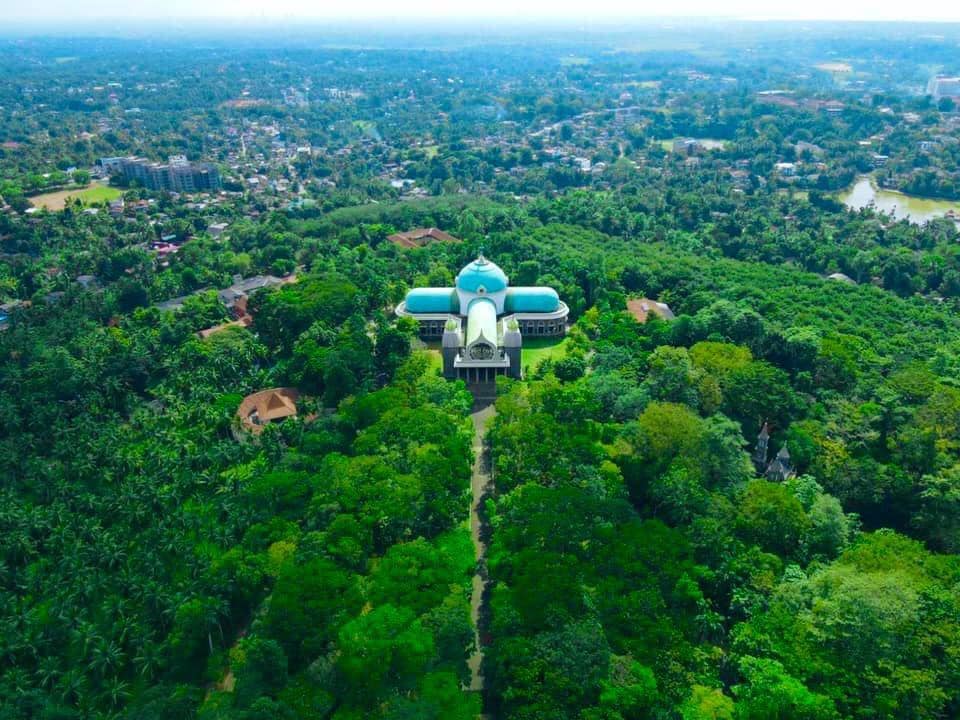
On February 4, 1950, the cornerstone for the Basilica of Our Lady of Lanka was laid. Construction was done with great care and creativity for many years. It was completed in 1974, a year after Pope Paul VI endowed the church with the title of Minor Basilica. On February 6, 1974, the consecration of the basilica and the crowning of the statue of Our Lady of Lanka took place, making it the National Basilica of Sri Lanka.
So, as promised, a basilica was built on Thanksgiving for Our Lady of Lanka to protect Sri Lanka from the hazards of the Second World War. To this day, the Basilica of Our Lady of Lanka, Tewatta, receives tens of thousands of pilgrims annually, making it one of the most popular churches in the country.
The Architecture of Basilica of Our Lady of Lanka
The architecture of the Basilica of Our Lady of Lanka is a marvelous Asian cultural symbol designed by Fr. Heras, which includes a charming mix of local historical, cultural, and archaeological components. The front porch of the basilica is supported by six Grecian-looking pillars to commemorate the number of dioceses in Sri Lanka during that era (Colombo, Chilaw, Galle, Jaffna, Kandy and Trincomalee.)
The porch is crowned by a two-dimensional flame-like design, the center of which is hollow, and the hollow circle is set with glass panes pieced into an intriguing spider’s web. At the centre of the web is a cross bearing the figure of Christ, sculpted by the Sri Lankan artist, Leila Peiris. The crucifix glittering was a reminder of the love that Jesus had for all of us.
The glass panels and the cross front form a high, arched corridor with a ribbed roof. On both sides of the roof rise two spires on top of golden bell enclosures, and these resemble modern Hindu temple gopurams. Once a person enters the Basilica of Our Lady of Lanka, their eyes are drawn to the apse, which is painted a beautiful sky blue with artistic clouds. The apse forms a backdrop for the life-sized statue of Our Lady of Lanka, depicted standing on top of a snowy mountain peak. The walls of the Basilica of Our Lady of Lanka are made of solid granite.
The main altar of the Basilica of Our Lady of Lanka is made of a block of white stone brought from a quarry at Kirimatiyagara. The Stations of the Cross of Tewatta Church, which begin from the left of the old church and wind alongside the bathing ponds, the grotto, and the mission house,. It ends where a special dais is reached in front of the church, and this is the twelfth station that commemorates the death of Christ on the cross. The outside of the Basilica of Our Lady of Lanka, Tewatta, includes the four convents, the Museum and Jubilee Hall, the Retreat House, the new and old grottos of Our Lady of Lourdes, the bathing pond and lake, the old church, etc.
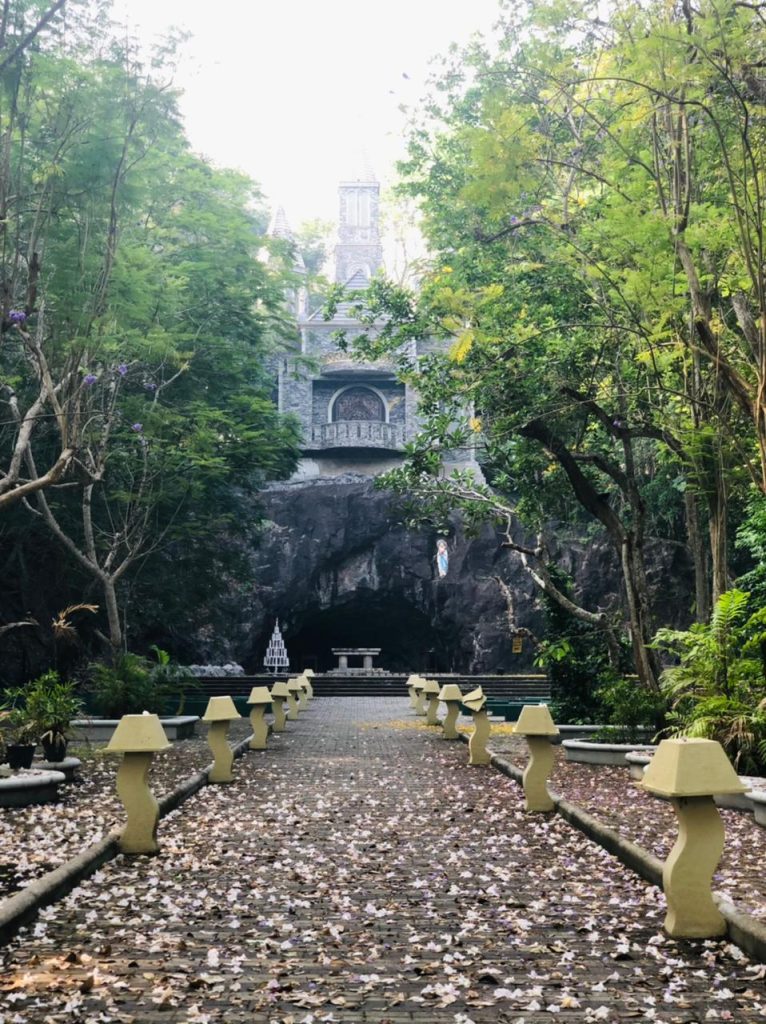
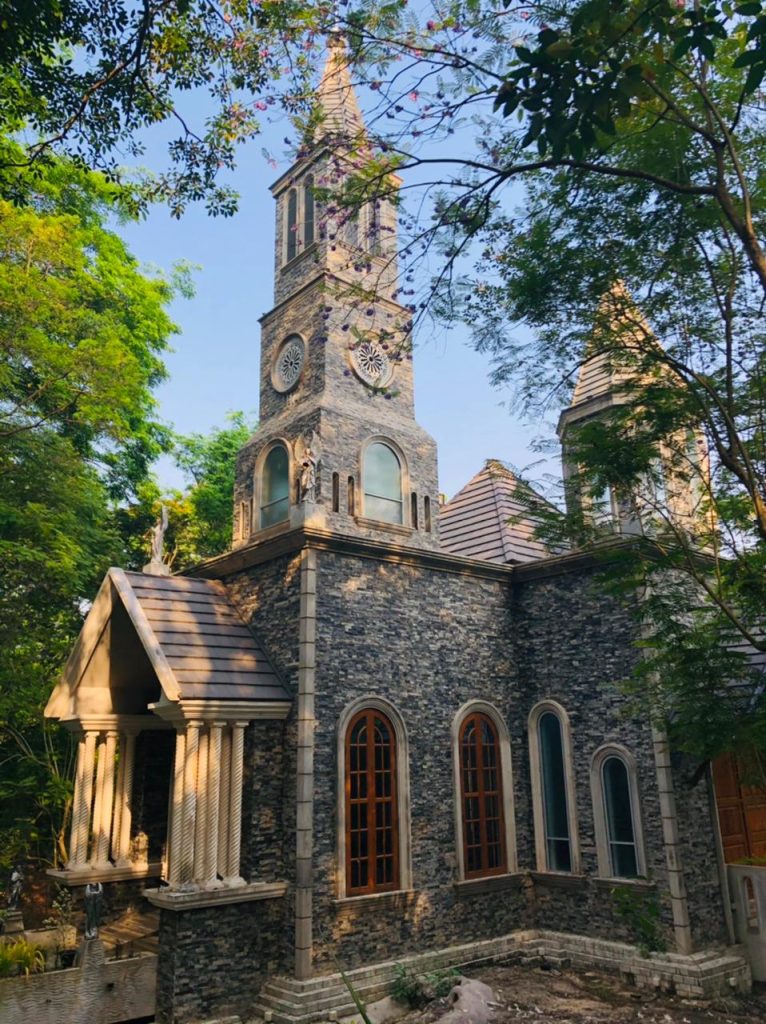
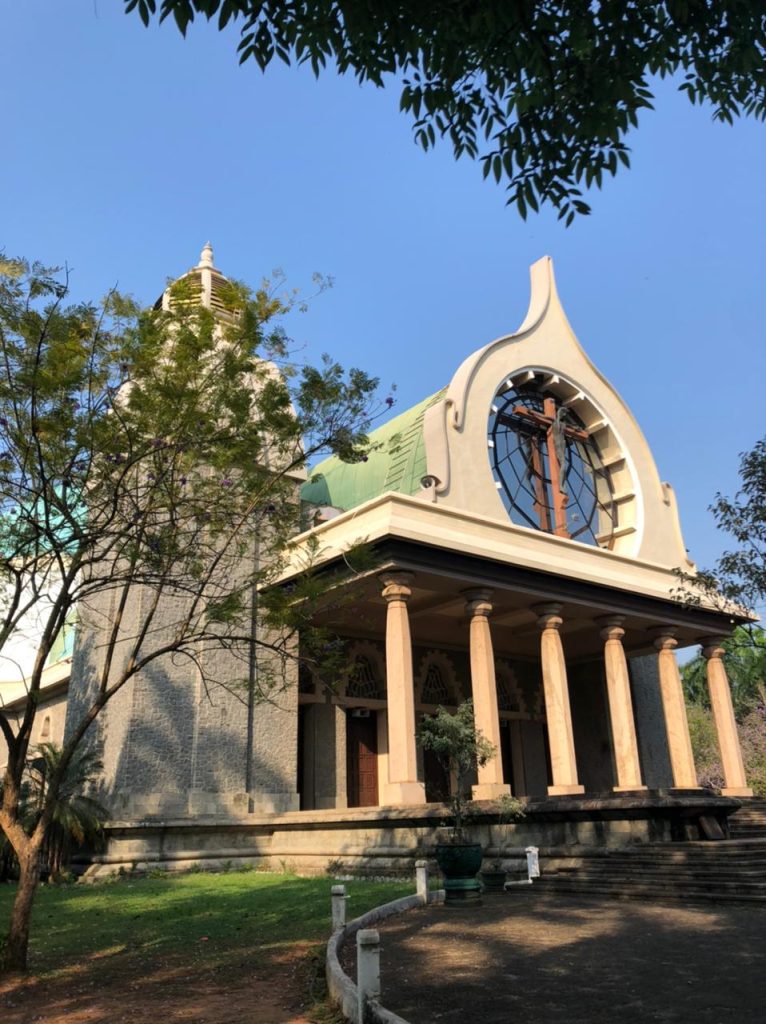
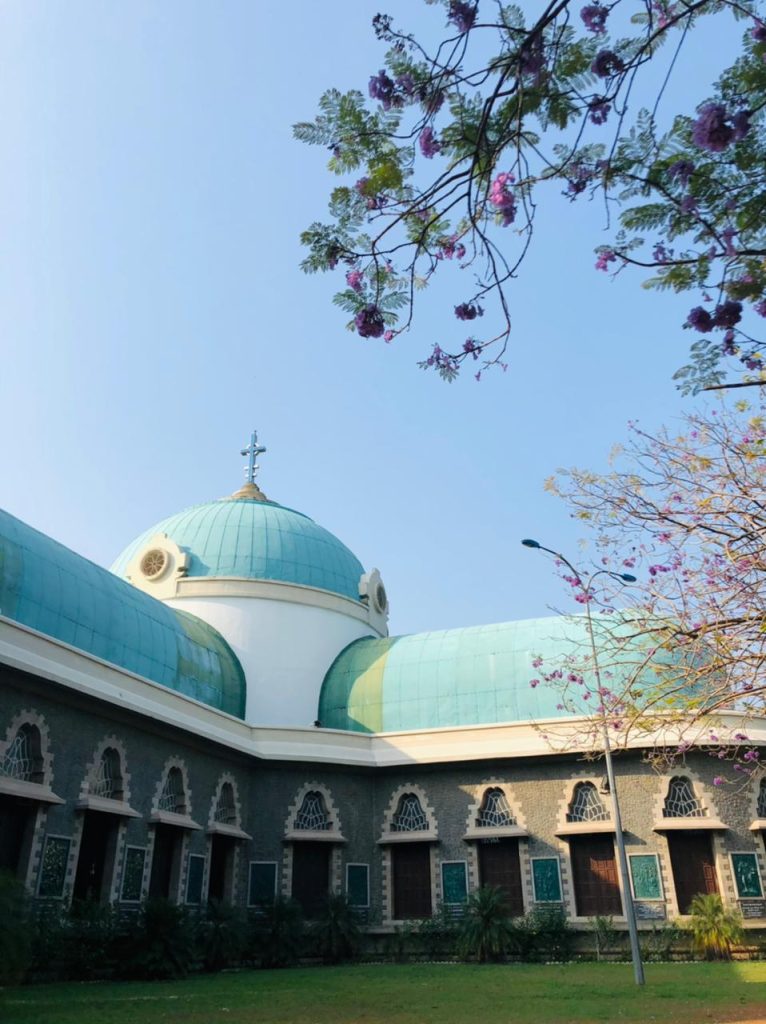
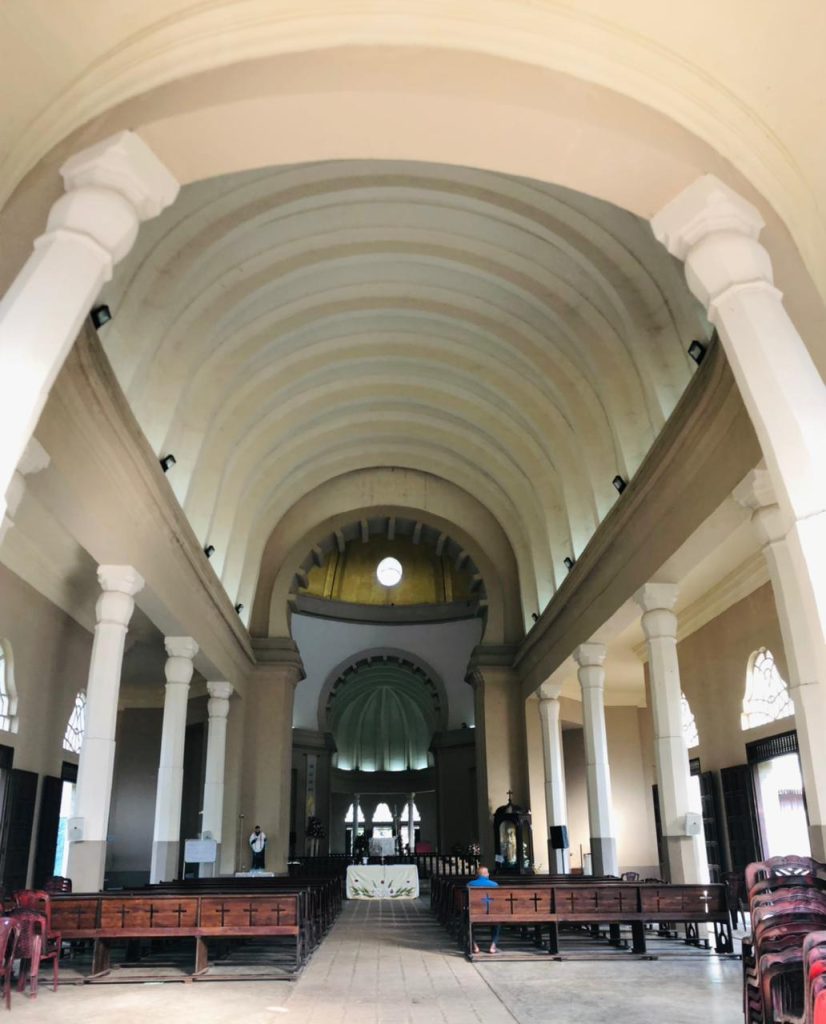
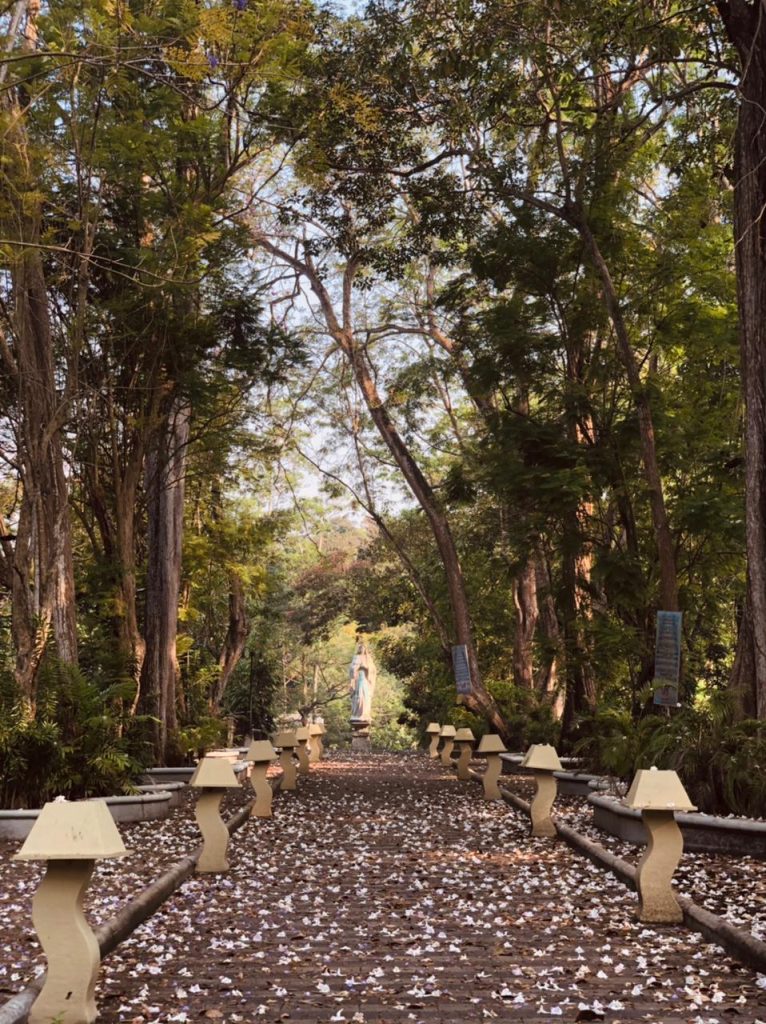
Image credit goes to its respective owners
Important Information
- Address: Basilica of Our Lady of Lanka, Lankamatha Rd, Tewatta, Ragama.
- Opened: February 6, 1974
- Opening Time: Every day 5:00 am to 6:00 pm
- Founder(s): Jean-Marie Masson
- Archdiocese: Archdiocese of Colombo
How to reach the Tewatta Church?
From Colombo to Thewatta Church is 18.8 km away. Ragama Train Station in Thewatta Road, Ragama, is the nearby Train Station to the Basilica.
Address: Basilica of Our Lady of Lanka, Lankamatha Rd.,Tewatta, Ragama, Sri Lanka.
Feast Day of Basilica of Our Lady of Lanka
The annual feast day of Tewatta Church (Basilica of Our Lady of Lanka or Our Lady of Lanka) is celebrated on February 4. (Same day the Independence of Sri Lanka).
Tewatta Church Mass Time
Sunday
11am – Sinhala
12.15pm – Tamil
3.30pm – Holy Rosary
4.30pm – Holy Hour & Benediction
5pm – Sinhala
6pm – English
Saturday
9.30am – Sinhala
11am – Sinhala
First Saturday
7.30am – Sinhala (Mass in front of the Grotto)
11am – Sinhala
Tuesday
9.30am – Sinhala
Followed by the recitation of the Holy Rosary
Wednesday
9.30am – Sinhala
Followed by the recitation of the Holy Rosary
Thursday
9.30am – Sinhala
Followed by the recitation of the Holy Rosary
Friday
9.30am – Sinhala
Followed by the recitation of the Holy Rosary
Services at the Shrine of Our Lady Of Lourdes
On the first saturday of the month.
7am – Sinhala (Rosary followed Holy Mass)
9am – Sinhala (Rosary followed Holy Mass)
10.30am – Tamil (Rosary followed Holy Mass)
4pm – Sinhala (Rosary followed Holy Mass)
6.45pm – Candle light procession
Well of Holy Water
Daily 8.30am – 5pm
For more information regarding Tewatta Church Mass Schedule: Contact No: 0112 958 211
What is a Basilica?
The term Basilica is a title of honour given to certain churches because of their antiquity, dignity, historical importance, or significance as centres of worship. There are four major basilicas, all of which are in Rome: St. John Lateran (the Cathedral of the Diocese of Rome), St. Peter’s of the Vatican, St. Paul’s outside the Walls, and St. Mary Major. Major basilicas have the papal altar and holy door, which is open during the beginning of a jubilee Year.
The pope also grants certain churches around the world the title of minor basilica. Minor basilicas enjoy certain ceremonial privileges. The papal arms may be displayed on the churches’ exteriors. As it is, there are currently well over 1500 basilicas all around the world. Tewatta Church, Basilica of Our Lady of Lanka is the only Roman Catholic church with basilica status in Sri Lanka.
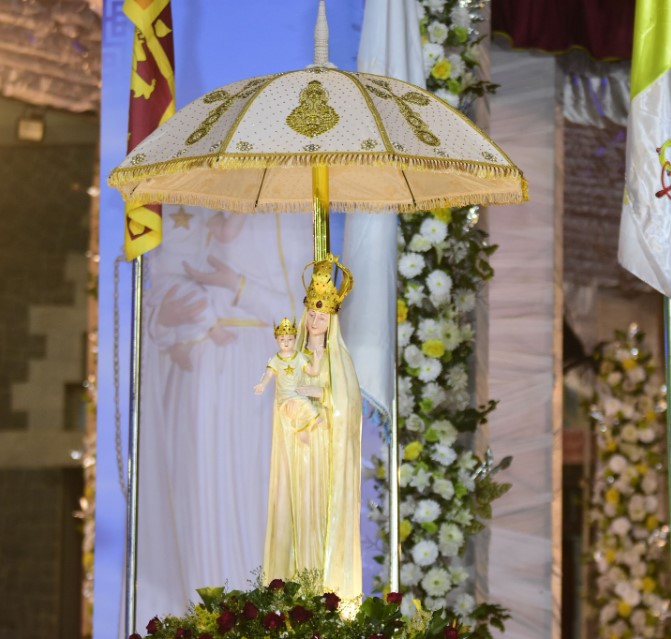
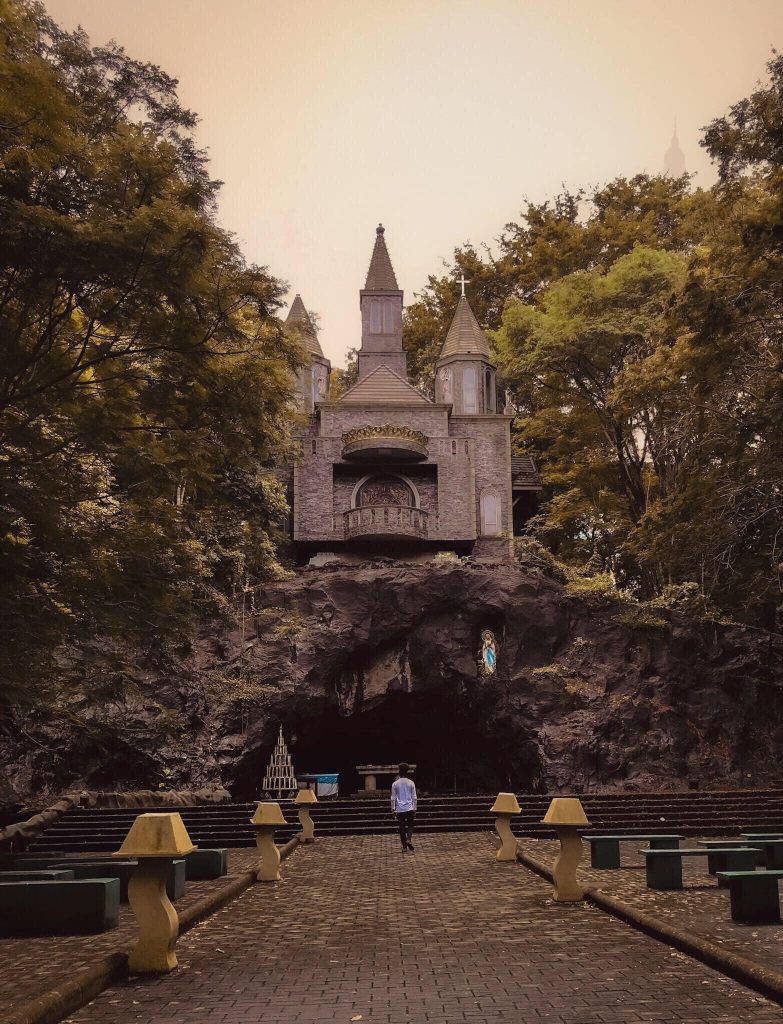
Reference(s): Silumina | Sundaytimes.lk | Wikipedia
Affiliate Disclosure: As an Amazon Associate, I earn from qualifying purchases. This blog post may contain other affiliate links as well by which I earn commissions at no extra cost to you.

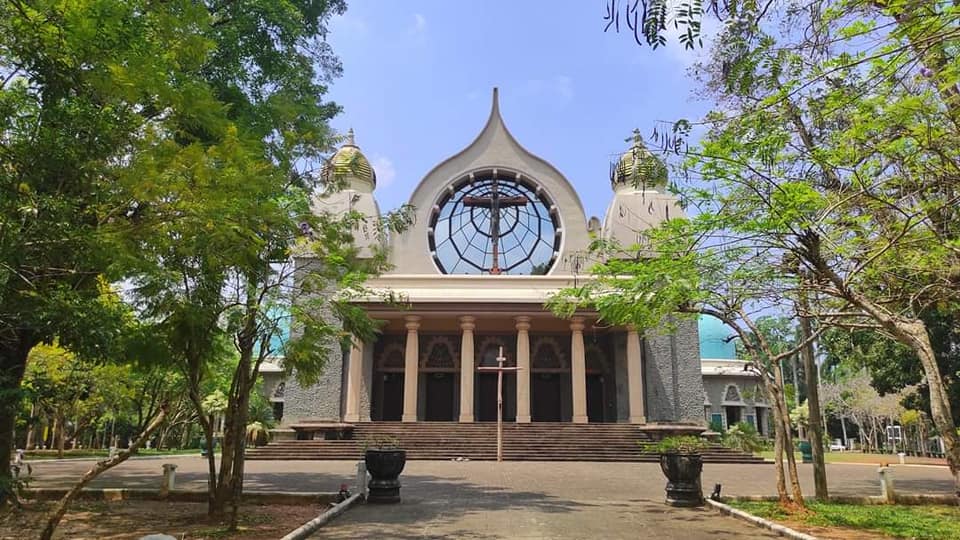
Every weekend i used to pay a visit this web site, for the reason that i want enjoyment, as this this
website conations really pleasant funny data too.
Very nice post. I simply stumbled upon your weblog
and wanted to mention that I have truly loved browsing your blog posts.
In any case I’ll be subscribing for your rss feed and I’m hoping
you write again very soon!
Fantastic website you have here but I was wanting to know if you knew of any forums that cover the same topics talked about in this article?
I’d really love to be a part of online community where I can get
feed-back from other experienced individuals that share
the same interest. If you have any suggestions, please let me know.
Many thanks!
You ought to be a part of a contest for one of the greatest sites
on the web. I most certainly will recommend this website!
This piece of writing is really a pleasant one it helps new web users,
who are wishing in favor of blogging.
An interesting discussion is worth comment. I do think that you ought to write more about this issue,
it may not be a taboo subject but generally people do not speak about such subjects.
To the next! All the best!!
Thanks for your marvelous posting! I seriously enjoyed reading it,
you will be a great author. I will make certain to bookmark your blog and definitely will come back in the future.
I want to encourage you continue your great job, have
a nice holiday weekend!
Hi there, just became alert to your blog through Google,
and found that it’s truly informative. I am gonna watch out for brussels.
I will be grateful if you continue this in future.
Lots of people will be benefited from your writing. Cheers!
Hi, I do think this is an excellent website. I stumbledupon it 😉 I
may return yet again since I book-marked it. Money and freedom is the best
way to change, may you be rich and continue to guide others.
Pretty! This was an incredibly wonderful post.
Many thanks for providing this info.
Its not my first time to pay a quick visit this site, i am browsing this
website dailly and obtain nice information from here every day.
I visit everyday some web sites and information sites to read content, except this website provides feature based writing.